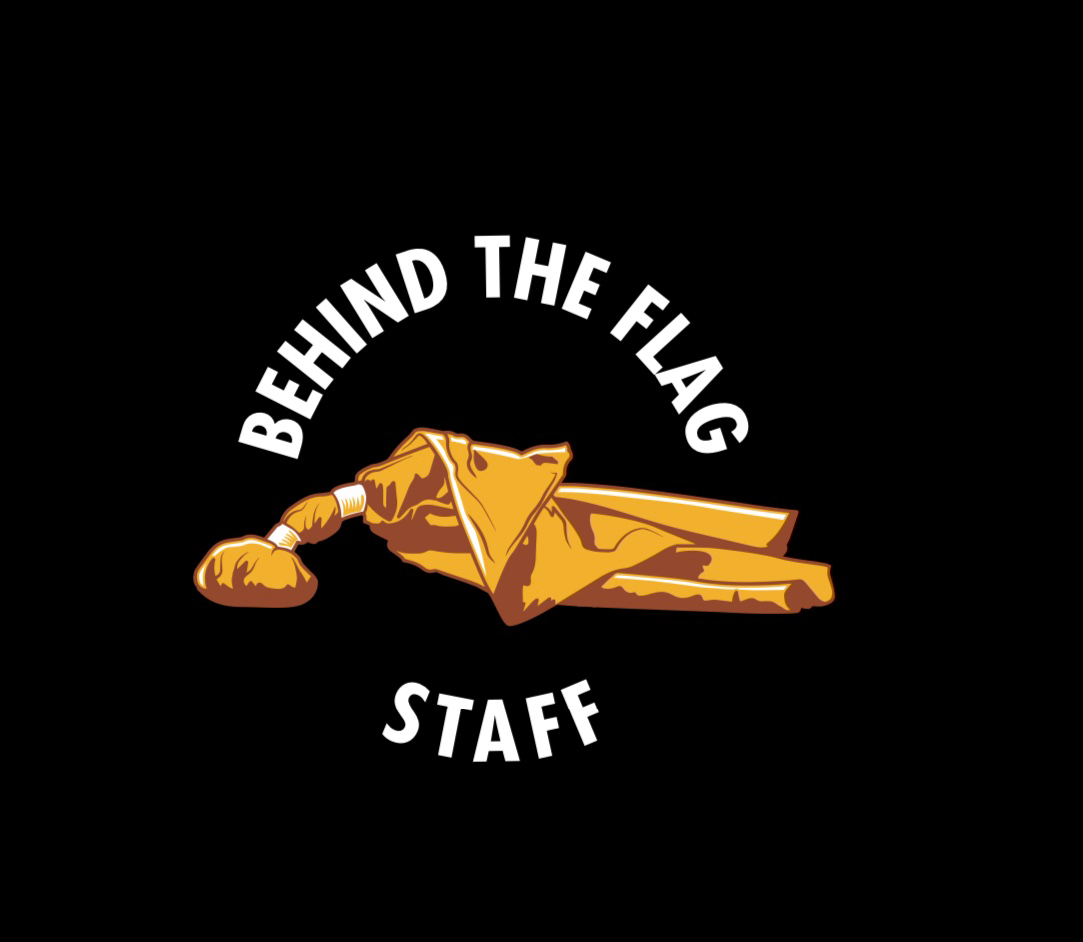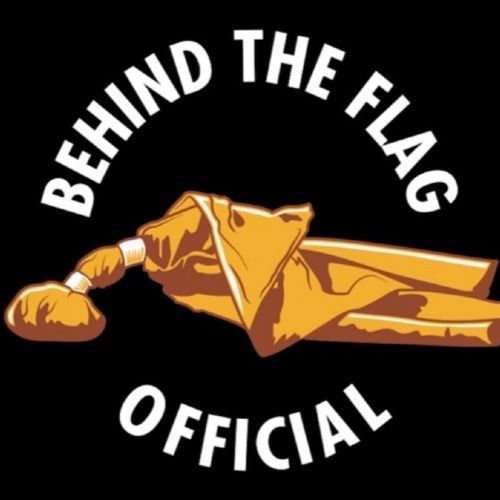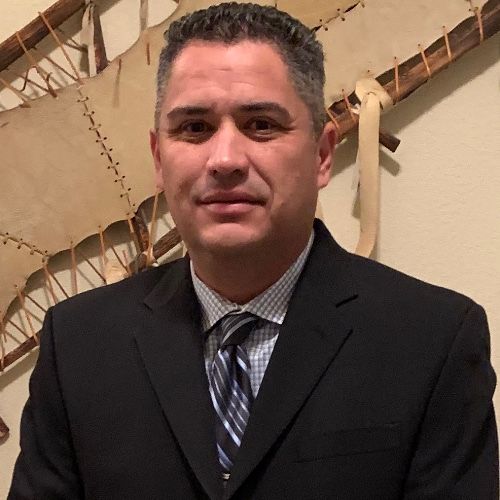GET IT RIGHT Airborne Receiver
Airborne Receiver
Dennis Barela (4s):
Alright, so today's Tuesday, and this is the first of the summer study sessions. We're doing something a little bit different this year, where, where we have get it right. That has volunteered to bring us 10 weeks of free training on high school rules and directed at, at our mechanics here in New Mexico. And like I said, my name is Dennis Barela. I'm official here in New Mexico, out of Albuquerque.
Dennis Barela (37s):
And I had met Barb or known last year at the front range camp out of Colorado. And he presented this software up there to the high school officials in the football camp in, and I just thought it was a great way to learn high school rules without having to get on the field and in front of players. And so here's the Bible for Bob.
Dennis Barela (1m 11s):
He started fishing in 2001 back. Judge had done many district and state champion ship games. He's been an instructor. He found get it right in 2012, the software's in 50 different States and 15 different countries. He's a game changer through an ASO and he is partner with Mike para and the battlefield cabal field since 2016. He also now recently a partner with the New Mexico athletics association and the MOA.
Dennis Barela (1m 48s):
And he's bringing us a lot of free training this summer. So what's that Bob? It's all yours.
Bob Arnone (1m 57s):
Okay. Thank you. I guess now need to be able to share my screen.
Dennis Barela (2m 10s):
Let me stop sharing.
0 (2m 13s):
Okay.
Dennis Barela (2m 16s):
I need to pull this forward. We can see.
Bob Arnone (2m 22s):
All right. Tonight, we get to talk a little bit about the airborne receiver. This is an extension of the video that the Dennis in the crew published during their break, but I just need to step through a couple of things here, cause we're going to take it another couple of levels deeper than what that video had.
Bob Arnone (2m 54s):
So of course, by the Federation a catch, this is a player establishing possession of a light ball in flight, and then first contacting the ground inbounds while maintaining possession of the ball. So we have this animation here. We'll drop this down.
Dennis Barela (3m 18s):
Hey Bob, it's just showing one screen, a blank screen with Get it right on the bottom.
Bob Arnone (3m 25s):
Okay. Let me try to get into the, there you go. Okay. I've got the animation now. Good? Yep. Okay. So, so now we've got the animation laid up here. We'll, we'll looking at this at about field level. We're going to do a play through on this just so you can see it from start to finish as to what we need to look for, where it goes up, comes down. So the mechanics on something like this, especially in New Mexico, where you're doing four, man, you have to be pretty tough because of what you really need to watch for.
Bob Arnone (4m 3s):
I is making sure number one, he even has possession of the ball. And then if he does where's that first foot hit and right here, you can see it that first foot isn't bounce in that second foot very quickly lands out of bounds. So for me, and that becomes pretty tricky to catch. You may need the up higher to help you on that. But depending on how far down field that wing official can get that, that one might be a little bit of a trick for y'all on a comparison, what you're going to see on the right side.
Bob Arnone (4m 41s):
And I'll run this through a place through going to see that the fender pushed that received roundabouts while he's in the air. There's nothing illegal about that. As long as that contact is legal, A receiver has possession of the ball. The defender has taken a look at him. He shoves him while you're still in midair. So his first contact is on the sideline. So that makes that an incomplete pass for some of you veteran officials out there.
Bob Arnone (5m 15s):
I think it was maybe four or five years ago that the rule used to be in high school. That if we thought that he would have landed in bounds, we could have ruled that a complete catch. So fortunately in my mind, anyway, fortunately, the Federation changed that rule so that if you get pushed and you leaned out of bounds, it's an incomplete pass. So we've got all that going on. So we're going to step back now and we'll go look at his airborne catch.
Bob Arnone (5m 52s):
So what's different this time. Is it well not on the sideline will work in a goal line going in and we'll do the play through on this. You're going to see this receiver go into the end zone, turn around, catch a pass. And the defender's going to hit him. And then he drives him out. Let's go ahead and watch that one more time. So what happens in this situation we'll step through it.
Bob Arnone (6m 27s):
So there are, the player has possession of the ball. He's above the end zone. We can see the plane where the foremost portion of the ball, there's clearly a inside the end zone. And this is when that defender contacts them And then he drives him out. So now this is the first time that that receiver contacts the ground. But according to when we look at forward progress, that airborne receiver gets credit for his forward progress.
Bob Arnone (7m 1s):
When that defender contacts. So for a progress is inside the end zone. That's when he's contacted by a defensive guy. So there we have a touchdown, I comparison, which you're going to see on the right side. We'll put this on play through It's. That receiver goes in and he kind of comes out on his own before that a defender hits them, take a look at this one. Again, he goes in, he starts coming out his momentum type some out of the end zone.
Bob Arnone (7m 36s):
And that's when that defender hits them, we'll step through it. So you can see how that looks. Step-by-step Possession of the ball forward point of the ball. Doesn't day break the plane. He's still in the air. The fender has not contacted him. There's momentum brings them out of the end zone. That's when that defender contacts them. That's when he also contacts the grounds. And now we have the completed catch and we have the defender that, that hit him while being an airborne.
Bob Arnone (8m 7s):
After being airborne, We roll over here. You can see that that receiver has contacted the ground. And then when he completes the action, we have the four most pointed the ball that's inside the one yard line. That would be the forward progress. That's where that bottle would be spotted. So even though that receiver caught the ball while he was in the air above the end zone, well, not going to give him a touchdown in that regard. Now, for those of you do that officiate at the college level, I understand that that's going to be a touchdown either way.
Bob Arnone (8m 46s):
So remember if you're working a game on a Friday night with high school rules or Saturday used an NCAA rules, Oh, you don't want to get these two mixed up. Now we're going to look at something store to related, but something you have to think about before you make a ruling, I will go back into forward progress here. And what we're going to see this time is white.
Bob Arnone (9m 16s):
24. Who's been burned on these plays. Finally decides he's gonna make his move. So we'll put this on a play through, he steps up. He catches the ball, he's in the air. So now he's sort of an airborne receiver. And then that blew 82, who was the intended receiver, contacts him while he's still in the air and jobs him out.
Bob Arnone (9m 46s):
So what you need to watch out for is this. He's got the ball clearly in possession. He's above the end zone for the progress of the ball is about a half yard inside. And that's when he's contacted by that a player. But now you have to remember what the definition of forward progress it's relative to the opponent's goal line. So this would not be a touchback instead, the ball's going to be spotted and given to be they're inside the one yard line.
Bob Arnone (10m 22s):
So I, even though those look the same forward progress is going to be different based on the direction that that team needs to go. So, any questions on any of that? Anybody have anything in the chat box and want me to show anything else relative to this? This was all that was scheduled to talk about tonight. We can talk about a few other things.
Bob Arnone (10m 52s):
I have a few wish
Dennis Barela (10m 53s):
I have a question just to clarify if that defender a white 24 intercepts the ball in the field, sat the one yard line in his momentum takes them into the end zone. What's the result of the play.
Bob Arnone (11m 14s):
Yeah. That's one where the momentum rule goes into effect. You should have a beanbag down on the ground there and yeah, that will be baseball at the one yard line or whatever he contacted the ground.
Dennis Barela (11m 33s):
But that is not covered under the airborne receiver. That's under the momentum roof
Bob Arnone (11m 40s):
That that's under the momentum rule. Yeah. There in rule eight. So yeah, once he, once he hits the ground, you have a completed catch there, but yeah, you're right. If there's paints and back into the end zone, then you go ahead and bring that ball out to where he caught that ball. So the momentum rule goes into fact inside the five yard line. I'm now going back to one of the spring webinars that, that you all had.
Bob Arnone (12m 15s):
There was a discussion about that. This gets into a philosophy thing that says, well, good news B is going to get the ball, but are you going to really spot that ball inside the one yard line or anything like that? You know, that's something that y'all have to kind of decide at the crew level at the association level. We just gonna really read that as a momentum, if it's inside the one yard line and put them in a tricky spot, but the rule is inside the five yard line, you have that momentum situation able to that momentum situation.
Bob Arnone (13m 1s):
I think Ken wanted to do some workups on this,
Dennis Barela (13m 4s):
Right? And so as, as far as format crew and say, this, this place starts 30 yards out. If you could go back to that screen, then you stopped sharing Mmm. In a format crew, you have the wings that are responsible for that goal line, even 30 yards out because we don't have a back judge. And as far as helping them decide whether That ball was in or out of The end zone on an interception to give B A, either a touchback or placing it at the one yard line, does anybody have any thought on What we're telling a format crew on where to spot that ball on an interception?
Dennis Barela (14m 1s):
You can unmute yourself Or a back judge.
Bob Arnone (14m 16s):
Oh, well, let me, what I tell folks, whenever I've, I'm doing my classes and all, is that, that there's a couple of things that you need to be armed with on any game day. And if you decide you're going to rule that one way or the other being calm, think about what you saw and then being able to explain it. So for coach wants to argue that, no, we, we want to have that ball.
Bob Arnone (14m 47s):
You know, if we just gave up that ball, we want the other team to have it inside one yard line. That's when you say, well, coach, I'm sorry. I don't. Yeah. From what I saw, he didn't have full possession of that until he fell into the end zone. So if you can talk through the rules and explain why you're deciding what you've got, that that's, that's half the battle. Now, if you decide that no he's going to be inside the, the one yard line that's when you, you tell that coach, well, congratulations coach that you ball right now.
Bob Arnone (15m 23s):
But according to the momentum rule, he had possession of the ball and his momentum brought it back into the, into the end zone. That's not a touchback. He's going to get the ball there inside the one yard line. So, you know, on a four man crew, that, that, that that's a difficult situation that you wind up having. There, it is what it is, but, but watch that play, process it in your mind. What, what happened there?
Bob Arnone (15m 53s):
No, that there could be two different outcomes on that and be able to explain what you know, what your decision is.
Dennis Barela (16m 3s):
Okay. Thank you. Does anybody have anything that has worked in that situation where you've explained to the coach within just a few seconds? Cause you know, we all know we don't have a lot of time to tell the coach what the rule is, but as far as key words that you used on a play like this to, to explain to the official why or to the coach, why he ruled it a certain way, Let me see.
Dennis Barela (16m 36s):
We check the chat room. So in the cat room it says four person airborne receiver sideline. You mentioned the umpire could help on the catch. How do you think the umpire can help?
Bob Arnone (16m 59s):
Yeah, my, my gas and that's what it is just a guess. Is that, do you, for, for that kind of situation, do you expect the wing official to be, to be down beyond those players, closer to that pylon, Where do you expect them to really wind up kind of behind those players? See if I'm thinking, if you're behind that. I mean, you know, those, those spent that receiver's gonna take off at the snap that wing official has to read the play.
Bob Arnone (17m 35s):
So already he's at a little bit of a disadvantage that, that a 16 year old kid already has a jumpstart on and going down the sideline there. So my expectation is unless you got you, bolt is a wing official. They're going to be behind that play. And your wing officials only gonna see is very likely only going to see whether the first foot landed in bounds or out of bounds. So he may not, he may have to guess whether that player had possession.
Bob Arnone (18m 8s):
I'm thinking that if the umpire has the opportunity to turn and look, he might at least be able to give her a ruling on whether the player was in possession of it. Oh bye.
Dennis Barela (18m 20s):
Maybe not. Right. He's not, he's not going to have a good view on if he was inside or outside the goal line. So
Bob Arnone (18m 27s):
Yeah. Yeah. So that's a, so you have the wing official, worried about, you know, you know, about whether it was inside or out, and then maybe the young park can help with, if it's a short pass with a longer pass, you might get a look at it again. You know, you all have mentioned it before for man. It's not the most optimum way of doing things, but just be ready to deal with that. If it's, if it's a sideline catch coach, you know, from what I saw, I felt that
Dennis Barela (19m 0s):
Clara had possession of the ball. The first book was in bounds. Right here we go. And I think, I think one of the officials or a back judge explained it pretty well here. So I think the opposite wing has to help with Ford progress. And when we use Crossfield mechanics, so the, you will have a hard time helping with that other than just a catch, no catch, but field mechanics, whether whether they were inside or outside the end zone is, is, was I understanding that comment correctly?
Dennis Barela (19m 37s):
Shake your head or yes or no? Yeah. Okay. And so there was another question in here about if the wide receiver goes up over the back with contact to make the catch in the air, would that be OPI based on that scenario, you put, you put up with the defense, making the interception in the end zone, whether he came in, I guess, down in end zone or down in the field to play at the one they're asking, I guess the question is what was conscious constitute OPI in that situation.
Bob Arnone (20m 23s):
Hi, I hate to phrase it that way, but, but think about what the whole definition of OPI is because it starts for the offense when the ball is snapped, but then the restriction stop when the ball is touched. So as long as that offensive player, isn't climbing over the back of that defender before he touches that ball, once that ball is touched, then the restrictions are lifted.
Bob Arnone (21m 3s):
So it's, you know, that's about a bang bang as you're going to get, but, but it gets to the whole understanding of the rules and be able to communicate both in your mind into the coach and to anyone else that, you know, this is how I saw it. He was not typing that defender. He wasn't interfering with it, the Fender's ability to, to catch that ball. And he, that player touched a ball before he made contact with anyone else, passenger interference restrictions or, or out the window at that point.
Bob Arnone (21m 46s):
So there's no flag for that. Now it's a function of, okay, who's got possession of the ball. Are they in the end zone or, or is he landing out on the field of play? Yeah, that's I think that's a lock you have to process in your mind. So try to think about what you saw process as quickly as you can take a deep breath and say, no flag, no flag touchdown, or next down, whatever it happens to be.
Bob Arnone (22m 29s):
Yeah. But anything having to do with interference, that's all judgment call on our part. So think about, you know, what you look for, how consistent are you and what you allow those players to do. Hopefully you're you have that same consistency as you go from game to game, but more importantly, you have that same consistency from the first quarter to the end of the fourth or to the end of the game, if you're in overtime.
Dennis Barela (23m 2s):
Okay. And I can just got a text message. Can you, can you run through those three scenarios one more time on your software of the sideline catch and the, the a goal line catch for offense and defense.
Bob Arnone (23m 18s):
Okay. Okay. My shirt, my showing the screen here. Yes. Okay. This one is probably going to be the defensive one just because it was still up. Yeah. There's the interception. And then he's out. We'll do step through on it.
Bob Arnone (23m 51s):
He's got the ball, but he's still in the air. I remember, you know, the whole thing about the airborne player were worried about forward progress. So forward progress for the defense is going on in the opposite direction. So that's why we're not giving them a touchback in this particular scenario here, because his forward progress is off to the left, not off to the right into the, into the end zone.
Bob Arnone (24m 24s):
And let me go back to do the airborne catch again here, the defender contact, somebody is in the end zone and drives them out. I think comparison, the offensive player comes out on his own And we'll step through those.
Bob Arnone (25m 3s):
Again, both players have possession of the ball while there the ball is either in the end zone of broken the plane of the goal line, No contact on the right side, we already have contacts you're on the left. So on the left, we're going to give him credit as an airborne player forward progress contacted by the defense On the right side,...




